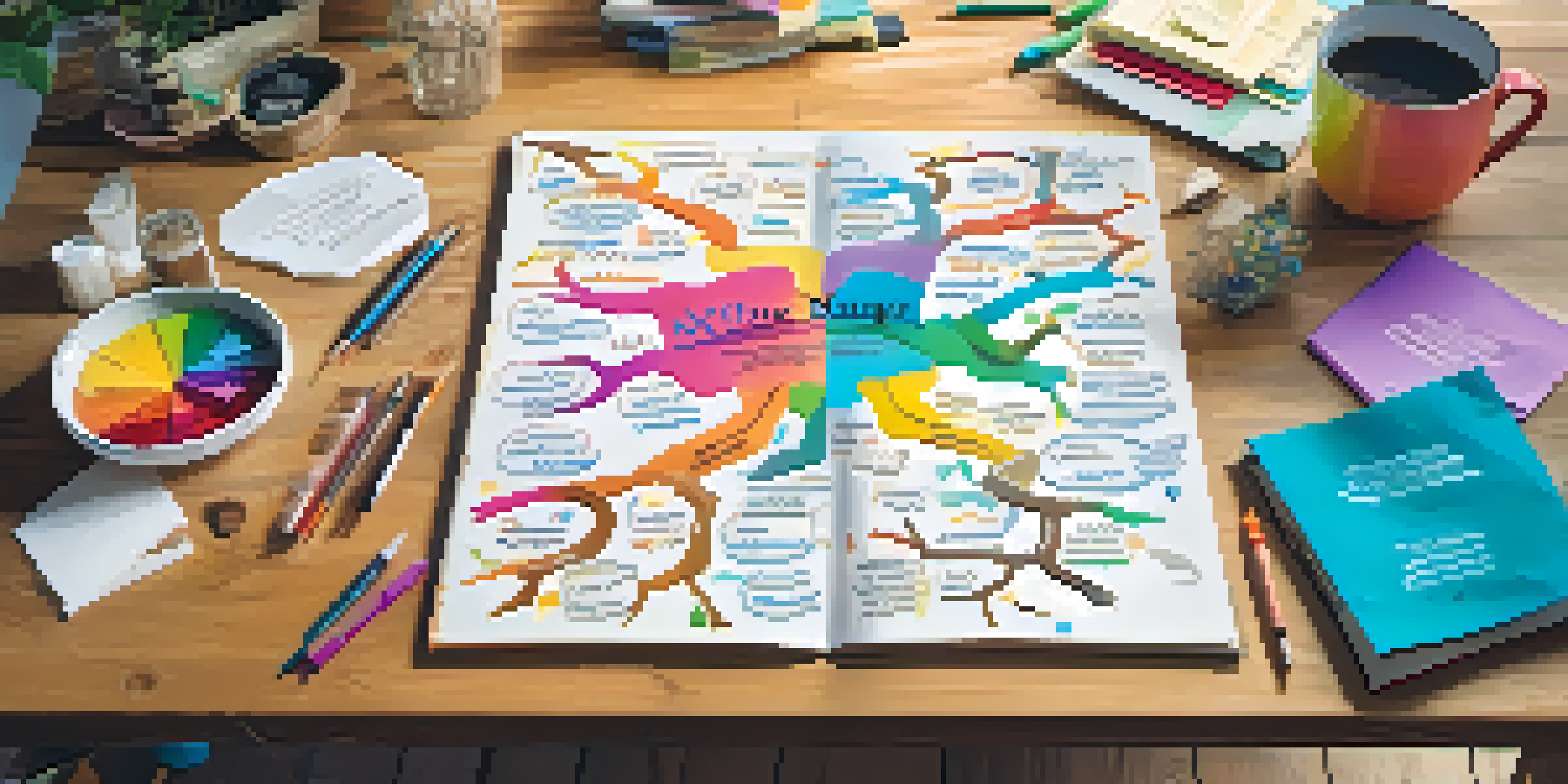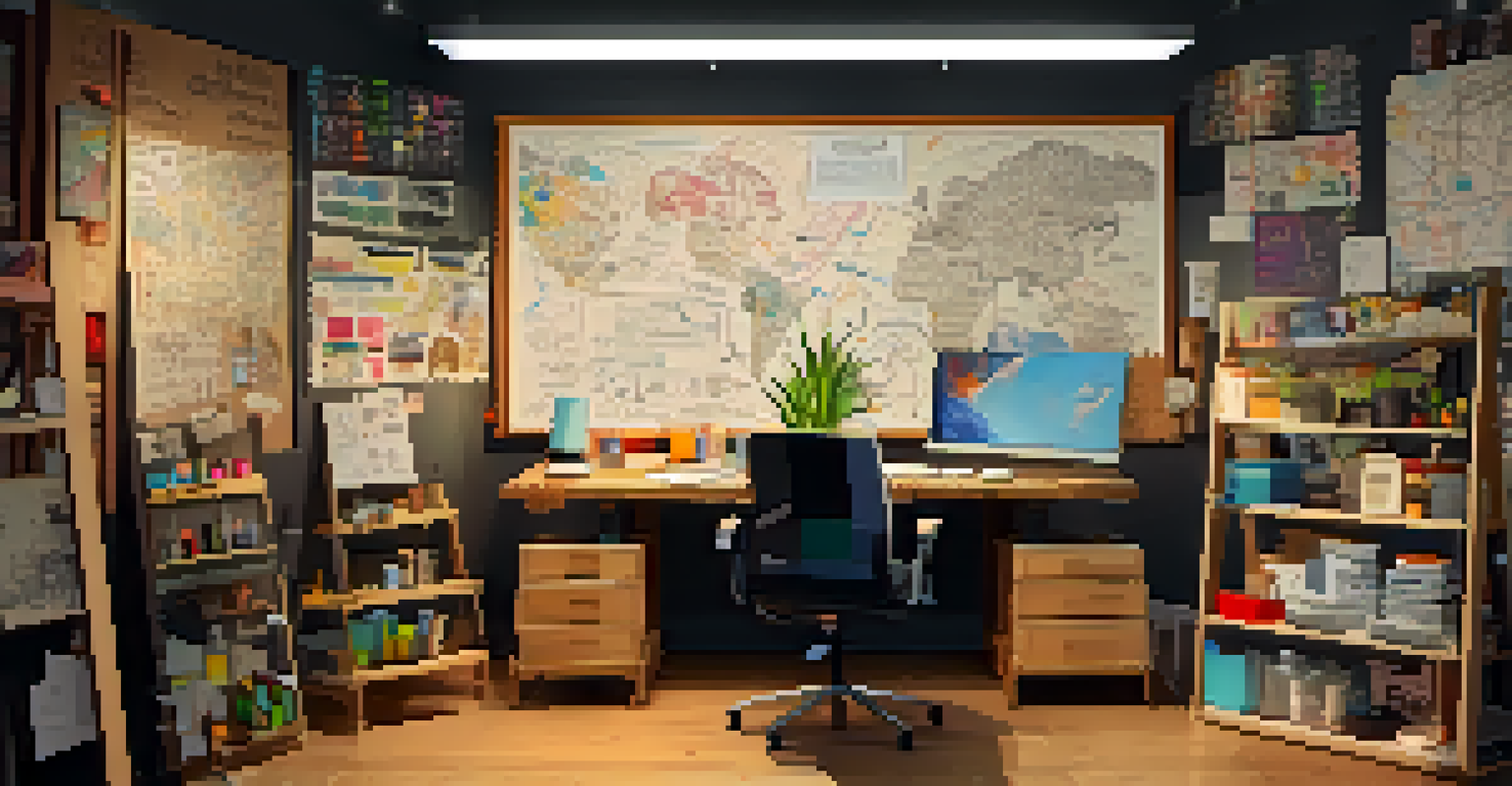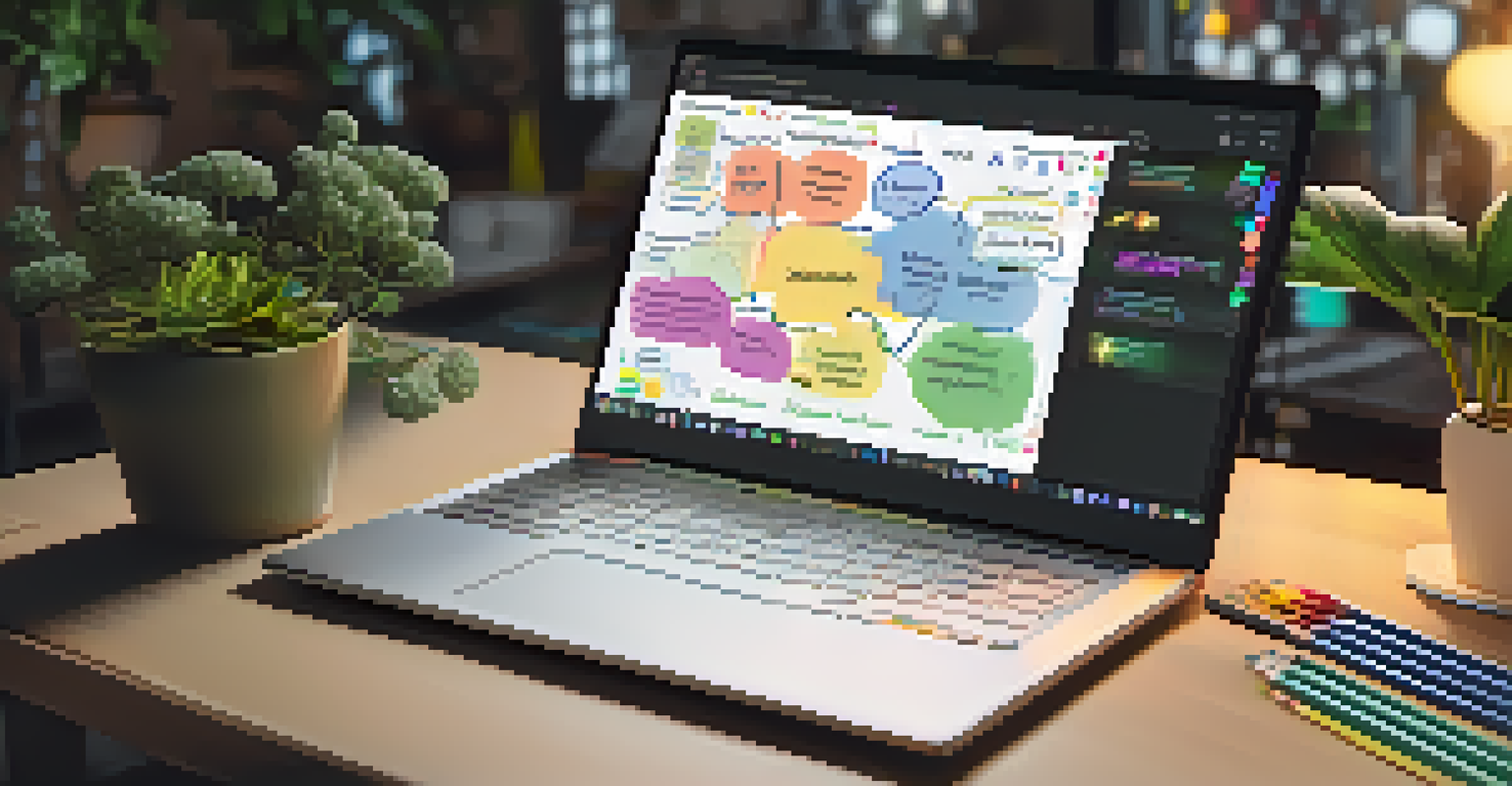Understanding Mind Mapping: Boost Creativity and Organization

What is Mind Mapping and Why Use It?
Mind mapping is a visual tool that helps organize thoughts and ideas. By using a diagram to represent concepts, it allows you to see connections and relationships clearly. This method can be especially helpful when tackling complex projects or brainstorming new ideas.
Mind mapping is a powerful technique that can help you unlock your creative potential and organize your thoughts more effectively.
The beauty of mind mapping lies in its flexibility; you can use colors, images, and symbols to make your map engaging and personal. This not only aids memory retention but also makes the process of organizing information more enjoyable. It’s like turning a dull list into a vibrant tapestry of ideas.
Whether you’re planning a project, studying for an exam, or even setting personal goals, mind mapping can provide clarity and structure. By breaking down information visually, you can approach challenges with a fresh perspective.
The Benefits of Mind Mapping for Creativity
One of the primary benefits of mind mapping is its ability to stimulate creativity. By allowing thoughts to flow freely in a non-linear fashion, you can explore ideas that might not surface in traditional planning methods. Imagine your mind as a sprawling tree, with branches extending in every direction—the more you explore, the more connections you’ll find.

This technique encourages divergent thinking, where you generate multiple solutions to a problem rather than getting stuck on one idea. It’s similar to brainstorming but with a visual twist that can make your thoughts feel more tangible. This can lead to unexpected insights and innovative concepts.
Visualize Ideas with Mind Mapping
Mind mapping is a visual tool that organizes thoughts and highlights connections, making complex projects easier to manage.
Additionally, mind mapping can help overcome creative blocks. When you feel stuck, revisiting your mind map can inspire new thoughts and directions. It’s as if you’re looking at a map of your thoughts, guiding you to uncharted territories of creativity.
Enhancing Organization with Mind Mapping
Mind mapping isn’t just for creativity; it’s also a powerful organizational tool. By visually arranging information, you can create a clear hierarchy, making it easier to prioritize tasks and ideas. Picture a well-organized closet, where everything has its place—mind maps bring that same clarity to your thoughts.
The mind is a wonderful servant but a terrible master.
Using mind maps can simplify complex subjects into digestible parts. For example, when studying for an exam, a mind map can break down topics into subtopics, helping you focus on one area at a time. This method not only aids understanding but also boosts retention.
Moreover, mind maps can serve as effective project management tools. By mapping out tasks, deadlines, and responsibilities, you can ensure nothing falls through the cracks. It’s like having a bird’s-eye view of your project, allowing for better planning and execution.
How to Create an Effective Mind Map
Creating a mind map is simple and can be done in a few steps. Start with a central idea or topic in the middle of your page, then branch out with related ideas. Use keywords rather than full sentences to keep it concise and focused.
Don’t hesitate to incorporate colors, images, and symbols—these elements can make your map more visually appealing and memorable. For instance, using a different color for each branch can help categorize ideas and enhance recall. Think of it as adding personality to your thoughts.
Boost Creativity Through Non-Linearity
By allowing ideas to flow in a non-linear fashion, mind mapping stimulates creativity and helps overcome creative blocks.
Finally, review and revise your mind map regularly. As your ideas evolve, so should your map. This iterative process ensures that your mind map remains relevant and useful, adapting to your changing thought patterns and goals.
Mind Mapping Tools and Resources
While you can create mind maps with just a pen and paper, several digital tools can enhance the experience. Software like MindMeister, XMind, and Coggle offer features like collaboration, templates, and easy sharing. These platforms can turn your mind mapping into a more dynamic and interactive process.
Many of these tools also allow for integration with other applications, making it easier to incorporate your mind map into your workflow. For instance, you can link tasks to your calendar or project management tools, ensuring everything is interconnected. It’s like having a digital assistant for your thoughts.
Additionally, numerous online resources and tutorials can help you get started with mind mapping. From blogs to videos, these resources can provide tips, examples, and inspiration to enhance your mind mapping skills.
Real-Life Applications of Mind Mapping
Mind mapping can be applied in various scenarios, from business planning to personal development. For example, entrepreneurs often use mind maps to outline business strategies or marketing plans, allowing them to see the big picture and finer details simultaneously. It’s akin to laying out a roadmap for success.
In education, students use mind mapping to prepare for exams, organize research, or brainstorm essays. The visual nature of mind maps makes studying more interactive and less daunting, making even the most complex subjects feel accessible. It transforms learning into an engaging adventure.
Enhance Organization and Clarity
Mind mapping simplifies information into a clear hierarchy, aiding in task prioritization and project management.
Moreover, mind mapping can also be beneficial in daily life. Whether you’re planning a vacation, setting personal goals, or even preparing a family event, mind maps can help you organize thoughts and tasks efficiently. It’s a versatile tool that can simplify many aspects of life.
Tips for Mastering Mind Mapping
To truly master mind mapping, practice is key. Start small; choose a topic you’re familiar with and create a mind map. As you become more comfortable, challenge yourself with more complex subjects. Over time, you’ll discover your unique style and preferences.
Another tip is to keep your maps clear and uncluttered. While it’s tempting to add every idea, focus on the most important points to maintain clarity. Think of it like decluttering a room; a tidy space allows for easier navigation and understanding.

Lastly, don’t be afraid to experiment with different formats and techniques. Try different layouts, colors, and symbols to find what works best for you. Embrace the creative aspect of mind mapping—it’s not just a tool, but an art form that can enhance both creativity and organization.